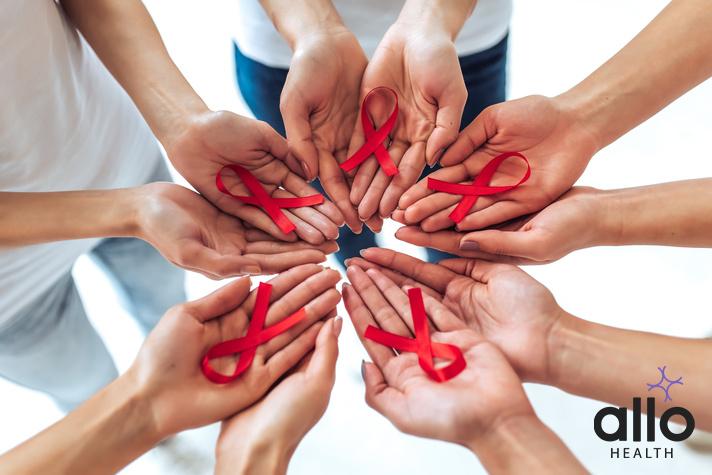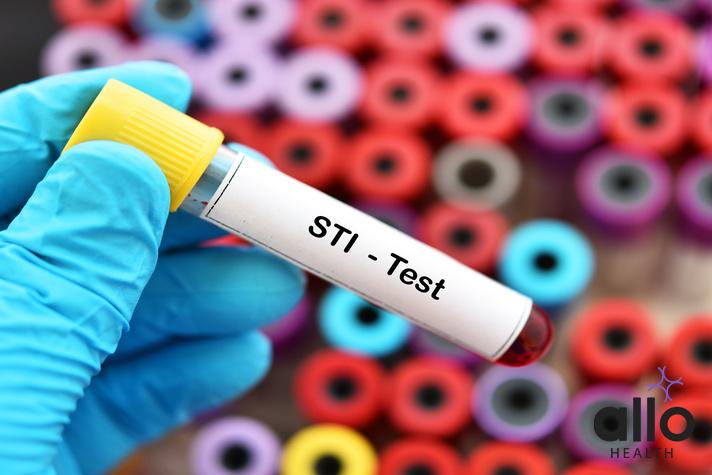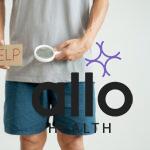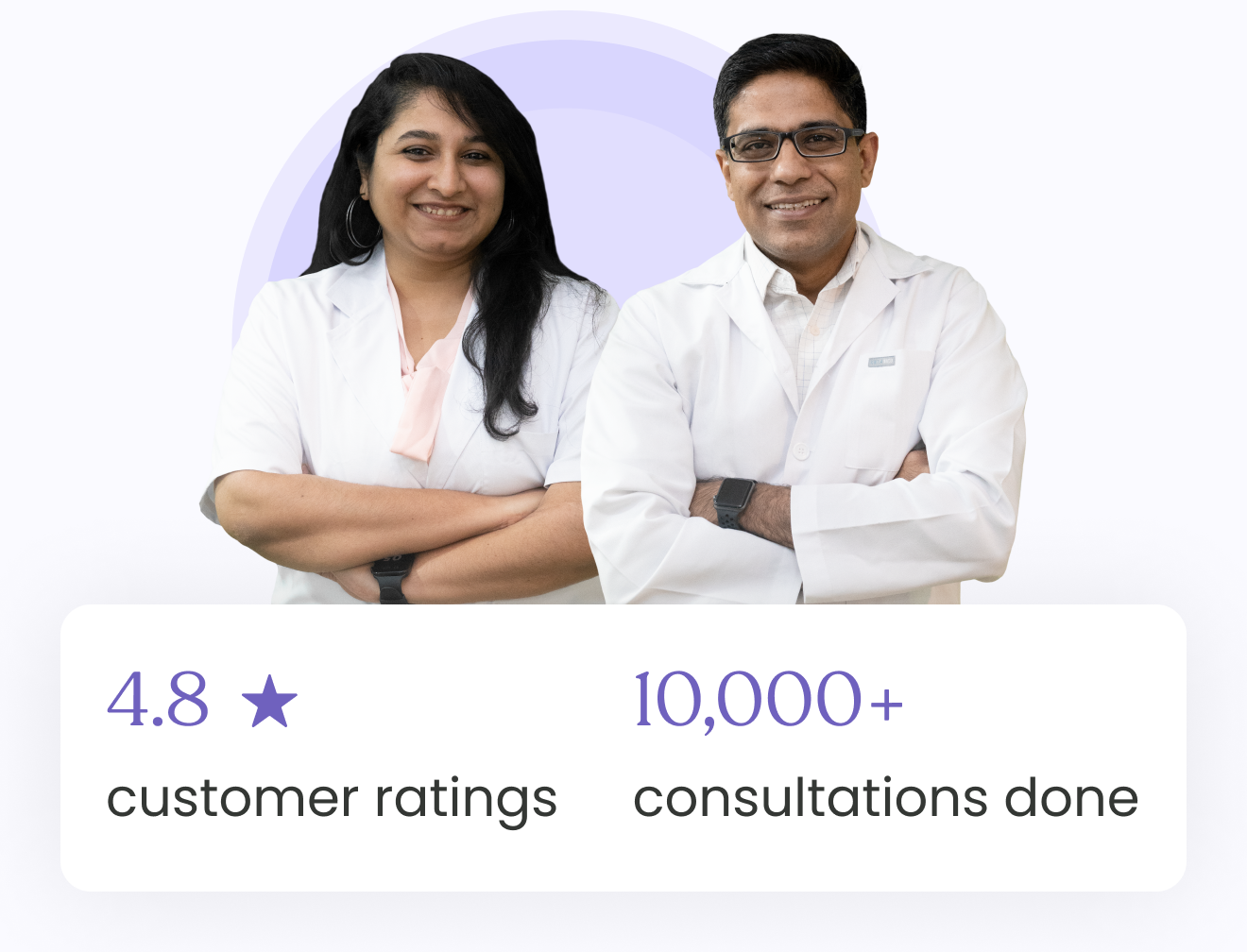How Is HIV Diagnosed?

Allo Health is dedicated to personalized well-being, offering support and trusted information tailored to individual health goals. The platform emphasizes human-generated content, led by a distinguished medical team of experts, including physicians and sexual health specialists. Their commitment to credibility involves rigorous fact-checking, authoritative research, and continuous updates to ensure accurate, up-to-date information. Allo Health's unique approach goes beyond conventional platforms, providing expert-led insights and a continuous commitment to excellence, with user feedback playing a crucial role in shaping the platform's authoritative voice.

Dr Sanina Mansoor holds MBBS degree from Yenepoya university,Mangalore.She has 8 years of experience working as a medical officer at various health centres and medical colleges.
Why This Was Upated?
Our experts continually monitor the health and wellness space, and we update our articles when new information became available.
Updated on 12 May, 2024
- Article was updated as part of our commitment to diversity, equity, and inclusion.

"The following blog article provides general information and insights on various topics. However, it is important to note that the information presented is not intended as professional advice in any specific field or area. The content of this blog is for general educational and informational purposes only.
Book consultation
The content should not be interpreted as endorsement, recommendation, or guarantee of any product, service, or information mentioned. Readers are solely responsible for the decisions and actions they take based on the information provided in this blog. It is essential to exercise individual judgment, critical thinking, and personal responsibility when applying or implementing any information or suggestions discussed in the blog."
HIV, or Human Immunodeficiency Virus, is a virus that attacks the body’s immune system, specifically targeting CD4 cells (T cells), which are crucial for fighting off infections. Diagnosing HIV involves a series of steps that include testing for the presence of the virus in the body. Here’s a comprehensive overview of how HIV is diagnosed:
Risk Assessment And Symptoms Evaluation

Before testing for HIV, healthcare providers typically conduct a risk assessment to determine a person’s potential exposure to the virus. They may ask about sexual behaviours, drug use (especially injection drugs), previous testing history, and potential exposure to infected bodily fluids. Symptoms associated with HIV, such as fever, fatigue, swollen lymph nodes, and skin rashes, may also be considered.
HIV Antibody Testing
The most common method for diagnosing HIV is through antibody testing. This test detects antibodies the immune system produces in response to HIV infection. The types of antibody tests include:
- ELISA (Enzyme-Linked Immunosorbent Assay): This test detects HIV antibodies in blood, saliva, or urine samples. It is highly sensitive but may produce false-positive results, especially during the window period when antibodies are not yet detectable.
- Rapid HIV Tests: These tests provide results within minutes using blood from a finger prick or oral fluids. They are convenient for quick screening but may require confirmation with a laboratory-based test if positive.
HIV RNA Testing
Also known as nucleic acid testing (NAT), this method directly detects the presence of HIV RNA (genetic material) in the blood. It is susceptible and can detect HIV earlier than antibody tests, during the acute phase of infection (within 7-28 days post-exposure). NAT is often used with antibody testing for accurate diagnosis, especially in cases of recent exposure.
Confirmatory Testing
If an initial antibody test is positive, a follow-up test is done for confirmation. The Western blot and immunofluorescence assay (IFA) are commonly used confirmatory tests that identify specific HIV antibodies in the blood.
CD 4 Cell Count And Viral Load Testing
After confirming HIV infection, healthcare providers assess the progression of the disease by measuring CD 4 cell counts and viral load. CD 4 cells are a key indicator of immune health, and a declining count indicates HIV progression. Viral load measures the amount of HIV in the blood and helps determine the effectiveness of antiretroviral therapy (ART).
Other Tests

- Drug Resistance Testing: This test identifies mutations in HIV genes that may cause resistance to certain antiretroviral drugs, guiding treatment decisions.
- Screening for Co-Infections: People with HIV are at higher risk of other infections like hepatitis B and C, so screening for these infections is important for comprehensive care.
- Home Test: HIV can be diagnosed using home testing kits that are approved by regulatory authorities and follow recommended testing protocols. These kits typically involve collecting a blood sample or oral fluid sample at home and then sending it to a laboratory for analysis.
Prevention Counselling And Linkage To Care
Alongside testing, HIV diagnosis involves counselling on prevention strategies, treatment options, and emotional support. Linkage to HIV care services is crucial for starting antiretroviral treatment early, which improves health outcomes and reduces transmission risk.
Diagnosing HIV involves a multi-step approach, starting with risk assessment, antibody testing, confirmatory tests, and monitoring CD 4 cell counts and viral load. Early diagnosis is key to initiating timely treatment and improving outcomes for individuals living with HIV. Regular testing, especially for high-risk populations, is essential for HIV prevention and early intervention.
Most Asked Questions
-
What tests are used to diagnose HIV?
The most common tests used to diagnose HIV are blood tests that detect either antibodies produced by the immune system in response to HIV infection or the presence of the virus itself. These tests include the HIV antibody test, the HIV RNA test, and the HIV antigen/antibody test. The choice of test depends on various factors such as the stage of infection, the window period, and the specific purpose of the testing.
-
What is the window period for HIV testing?
The window period refers to the time between HIV infection and when the virus can be detected reliably by a test. During this period, a person may have HIV but test negative because their immune system has not yet produced enough antibodies or antigens for detection. The length of the window period varies depending on the type of test used, with antibody tests typically having a longer window period compared to RNA or antigen/antibody tests.
-
How accurate are HIV tests?
HIV tests are highly accurate when performed correctly and interpreted by trained healthcare professionals. The accuracy of a test is measured in terms of sensitivity (its ability to detect true positive cases) and specificity (its ability to correctly identify true negative cases). Modern HIV tests have high sensitivity and specificity rates, but false-positive or false-negative results can still occur, especially during the window period or due to technical errors.
-
Can HIV be diagnosed with a home testing kit?
Yes, HIV can be diagnosed using home testing kits that are approved by regulatory authorities and follow recommended testing protocols. These kits typically involve collecting a blood sample or oral fluid sample at home and then sending it to a laboratory for analysis. Home testing kits offer convenience and privacy, but it's essential to follow the instructions carefully and seek confirmation from a healthcare provider if the results are positive.
-
What happens after a positive HIV test result?
A positive HIV test result indicates that the person has been infected with HIV. After a positive result, healthcare providers will conduct further tests to confirm the diagnosis, determine the stage of infection, and assess the individual's overall health. They will also provide counseling, information about HIV/AIDS, and guidance on treatment options, including antiretroviral therapy (ART) to manage the infection and improve quality of life. Support services, such as mental health counseling and peer support groups, may also be offered to help cope with the diagnosis.











































